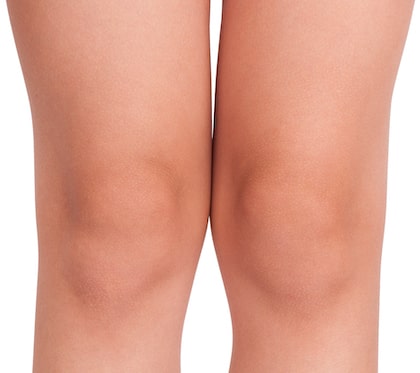
Patients who have trouble eliminating stubborn fat from the body often turn to liposuction to gain a better contour to the treated area. One area of the body that is not often discussed, but can be treated with liposuction, is the knees. Keep reading this informative article to learn more about the procedure and how it is performed.
Knee liposuction is a surgical procedure where a doctor removes fat deposits from the inner knee of the patient. It is often performed at the same time as thigh liposuction in order to give the patient a look that is more contoured.
It is an ideal cosmetic surgery procedure for someone having trouble eliminating fatty deposits in the area of the knees even though they follow a healthy lifestyle. Ideal candidates should also have a good amount of skin elasticity and be at a healthy weight for their body.
Patients do need to know that knee liposuction does not completely eliminate saggy skin or excess cellulite on the body. It is important to know the extent of the results that can be expected after the knee liposuction procedure.
 The patient will be given anesthesia in order to keep them comfortable during the surgery. Then, the surgeon will create small incisions that are located around the inner knee in order to insert a small tube that is known as a cannula. The cannula will be moved around the targeted area of the body so the fatty deposits will be loosened and suctioned out of the body.
The patient will be given anesthesia in order to keep them comfortable during the surgery. Then, the surgeon will create small incisions that are located around the inner knee in order to insert a small tube that is known as a cannula. The cannula will be moved around the targeted area of the body so the fatty deposits will be loosened and suctioned out of the body.
Once the designated amount of fat is removed from the area of the knees, the surgeon will close the incisions and then cover the treated area with compression bandages. These bandages will be placed on the body in order to help control the amount of swelling and bleeding experienced after the surgery.
The amount of swelling in the legs can also be minimized by keeping the legs elevated and wearing the compression garments according to the instructions provided by the doctor. In addition, the patient will need to avoid any type of exercise or strenuous activities for a few weeks.
In addition to the swelling and bleeding discussed above, there are some additional risks and complications that are common following knee liposuction surgery. Some of these common risks include:
If there is a good amount of loose or excess skin in the treated area, the patient might want to have a separate surgical procedure to address and remove the excess skin.
There is also a possibility of too much fat being removed during the surgery. If too much excess fat is removed during knee liposuction, the final results can create an uneven contour to the treated area. As the excess fat has been permanently removed from the body, the uneven contour can be quite difficult to address or correct.
The first step in the knee liposuction process is scheduling a consultation appointment with a surgeon who is properly trained and experienced in performing the procedure. The consultation appointment is the opportunity for the patient to ask any questions they have about the surgery and also voice any concerns they have about undergoing knee liposuction.
The surgeon will examine the current condition of the knees to see how much excess fat is in the targeted area of the body. The doctor will also perform an in-depth medical examination of the patient to make sure the person is healthy enough to have the surgery.
The patient will also have the opportunity to discuss their overall goals and desired final results. It is important for the doctor to know what the patient has in mind in order to determine if the desired results can be achieved or if the person does not have a realistic goal in mind.
During the consultation appointment, the patient can also ask to see examples of previous patients treated by the surgeon. The examples can be in the form of “before and after” photos of actual patients so the new patient can get a better idea of the type of results they can expect to see after the procedure.
Keep in mind that knee liposuction is considered to be a cosmetic procedure which means it is not covered by insurance (since it is not medically necessary). In general, liposuction can cost anywhere from $5900-$10,000. The final cost depends on the amount of work performed by the surgeon, the number of treatments necessary to achieve the desired results, and any additional fees charged by the surgeon or the medical facility. The surgeon can give the patient a more detailed answer regarding the total cost once the medical examination of the knees is completed and the amount of fat to be removed is determined by the doctor.
- MA